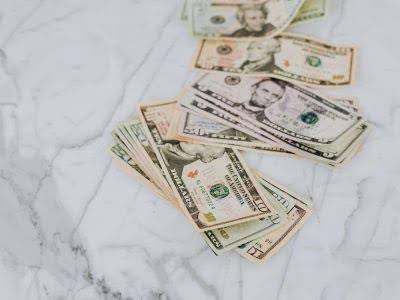
Depreciation is the process of allocating the cost of a tangible asset over its useful life. It reflects the asset’s reduction in value due to wear and tear, obsolescence, or age. Depreciation helps businesses match expenses with revenues generated by the asset, ensuring accurate financial reporting. Generally Accepted Accounting Principles (GAAP) allow for various depreciation methods, including DDB, as long as they provide a systematic and rational allocation of the cost of an asset over its useful life. If you make estimated quarterly payments, you’re required to predict your income each year.
- With Taxfyle, your firm can access licensed CPAs and EAs who can prepare and review tax returns for your clients.
- Double Declining Balance or DDB refers to the accelerated method of calculating depreciation in which asset value gets depreciated at twice the rate as that in the straight-line method.
- This rate is then doubled to produce the double declining rate, which, in this case, would be 40%.
- The magic happens when our intuitive software and real, human support come together.
- DDB is preferable for assets that lose their value quickly, while the straight-line method is more suited for assets with a steady rate of depreciation.
- This is the table that shows the depreciation account of the balance sheet for 5 years of the asset’s life.
Management
Unlike other depreciation methods, it’s not too challenging to implement. Salvage value, or residual value, represents the estimated amount an asset is expected to retain at the end of its useful life. While the double declining balance method emphasizes rapid depreciation, the salvage value plays a role in ensuring total depreciation does https://www.bookstime.com/ not reduce the book value below this amount. Explore the double declining balance method for depreciation, focusing on calculation, adjustments, and financial reporting insights.

Company Overview

The double declining balance depreciation method is a way to calculate how much an asset loses value over time. It’s called double declining because it uses a rate that is double the standard straight-line method. This method is often used for things like machinery or vehicles that lose value quickly at first. The Double Declining Balance Method (DDB) is a form of accelerated depreciation in which the annual depreciation expense is greater during the earlier stages of the fixed asset’s useful life. Double declining balance depreciation is an accelerated depreciation method that charges twice the rate of straight-line deprecation on the asset’s carrying value at the start of each accounting period.
Application Management
On Thursday, you have one eighth left, and you drink half of that—so you’ve only got one sixteenth left for Friday. And so on—as long as you’re drinking only half (or 50%) of what you have, you’ll always what are retained earnings have half leftover, even if that half is very, very small. Sign up to receive more well-researched small business articles and topics in your inbox, personalized for you.
- Typically, accountants switch from double declining to straight line in the year when the straight line method would depreciate more than double declining.
- Deskera Books is an online accounting software that your business can use to automate the process of journal entry creation and save time.
- This article is a must-read for anyone looking to understand and effectively apply the DDB method.
- Note, there is no depreciation expense in years 4 or 5 under the double declining balance method.
- If you’ve taken out a loan or a line of credit, that could mean paying off a larger chunk of the debt earlier—reducing the amount you pay interest on for each period.
When to use the DDB depreciation method

Doing so helps to counterbalance the expanded maintenance costs with fewer depreciation costs. Although both DDB and declining depreciation are considered accelerated methods; however, double declining balance uses a depreciation rate that is twice that in the simple declining depreciation. The formula takes into account the salvage value and the original price of the asset.
- If the double-declining depreciation rate is 40%, the straight-line rate of depreciation shall be its half, i.e., 20%.
- Book value is the original cost of the asset minus accumulated depreciation.
- In summary, the choice of depreciation method depends on the nature of the asset and the company’s accounting and financial objectives.
- First, the straight-line depreciation rate is determined by dividing 100% by the asset’s useful life.
- This method falls under the category of accelerated depreciation methods, which means that it front-loads the depreciation expenses, allowing for a larger deduction in the earlier years of an asset’s life.
- That’s why depreciation expense is lower in the later years because of the fixed asset’s decreased efficiency and high maintenance cost.
- As an accountant, one should be comfortable with all methods of depreciation.
- This cycle continues until the book value reaches its estimated salvage value or zero, at which point no further depreciation is recorded.
- Here’s the depreciation schedule for calculating the double-declining depreciation expense and the asset’s net book value for each accounting period.
- Adam Hayes, Ph.D., CFA, is a financial writer with 15+ years Wall Street experience as a derivatives trader.
- They also report higher depreciation in earlier years and lower depreciation in later years.
- Double declining balance depreciation is a method of depreciating large business assets quickly.
- Your employees can view their payslips, apply for time off, and file their claims and expenses online.
This transparency helps stakeholders understand the rationale behind the chosen method and its financial impact. For tax purposes, businesses may use different methods, like MACRS, potentially creating temporary differences between book and taxable income. These differences are recorded as deferred tax assets or liabilities, emphasizing the importance of accurate and consistent reporting practices. The double-declining balance depreciation (DDB) method, also known as the reducing balance method, is one of two common methods a business uses to account for the expense of a long-lived asset.

(You can multiply it by 100 to see it as a percentage.) This is also called the straight line depreciation rate—the percentage of an asset you depreciate each year if you use the straight line method. The MACRS method for short-lived assets uses the double declining balance method but shifts to the straight line (S/L) method once S/L depreciation is higher than DDB depreciation for the remaining life. But as time goes by, the fixed asset may experience problems due to wear and tear, which would result in repairs and maintenance costs. That’s why depreciation expense is lower in the later years because of the fixed double declining balance method asset’s decreased efficiency and high maintenance cost. In contrast to straight-line depreciation, DDB depreciation is highest in the first year and then decreases over subsequent years. This makes it ideal for assets that typically lose the most value during the first years of ownership.

To calculate the depreciation expense of subsequent periods, we need to apply the depreciation rate to the laptop’s carrying value at the start of each accounting period of its life. DDB is best used for assets that lose value quickly and generate more revenue in their early years, such as vehicles, computers, and technology equipment. This method aligns depreciation expense with the asset’s higher productivity and faster obsolescence in the initial period.
The double declining balance method of depreciation reports higher depreciation charges in earlier years than in later years. The higher depreciation in earlier years matches the fixed asset’s ability to perform at optimum efficiency, while lower depreciation in later years matches higher maintenance costs. It’s ideal to have accounting software that can calculate depreciation automatically. To compute annual depreciation using the double declining balance method, the determined rate is applied to the asset’s book value at the start of each year. For instance, if a machine costs $10,000, has a five-year useful life, and no salvage value, the double declining rate of 40% results in a $4,000 depreciation expense in the first year.